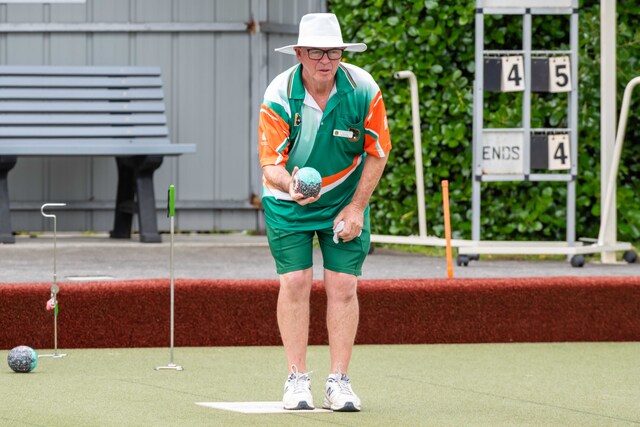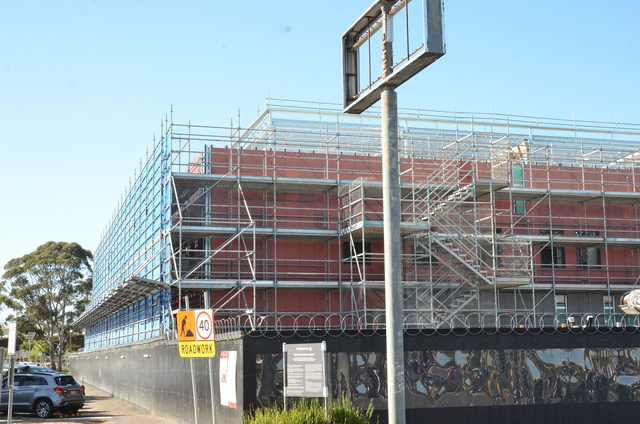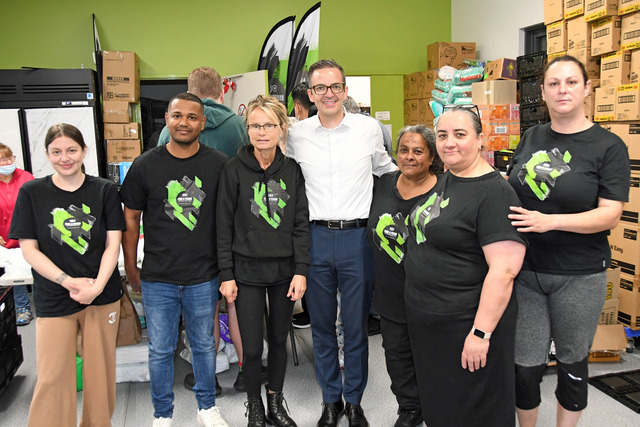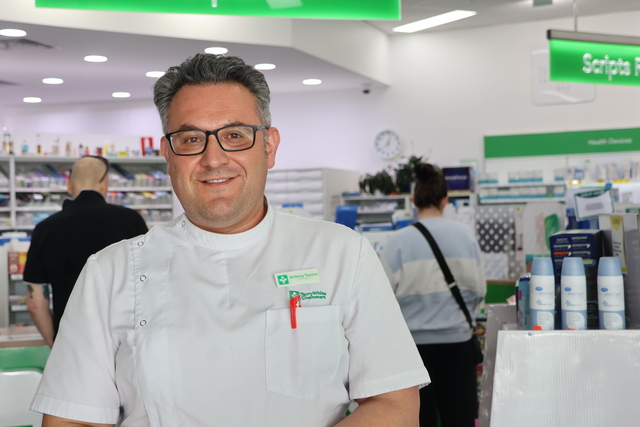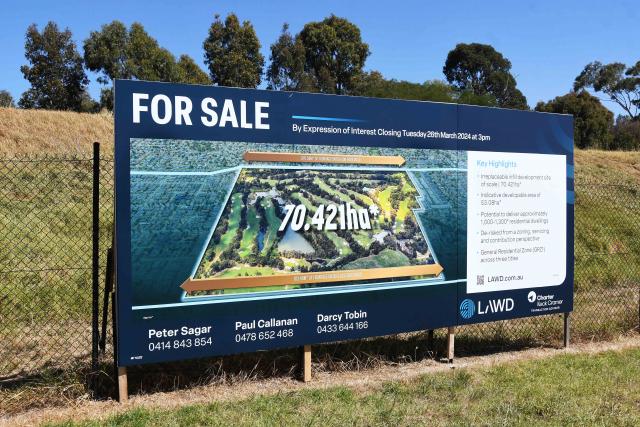Communities beyond Cranbourne still feel left out of train access with the continued silence on the Clyde Rail Link, while a new station has recently been built not far away in East Pakenham.
Growth areas Clyde and Clyde North have a current population of over 40,000 and are expected to have just under 110,000 by 2031 – yet these towns still lack a train station.
Chalm Davey, the sales associate of Verve, a developing estate in Clyde, said one of three people coming into the office would ask about the potential Clyde Station.
The fledging estate along Pattersons Road is eight kilometres away from the Cranbourne Station, which would take residents about an hour to go by bus, the only public transport option in the area.
“Once a Clyde Station is up and going, it’ll be four kilometres from us,” she said.
“At the moment, we have to say to our clients we don’t have any details around the Clyde station, recommending them go to the Cranbourne Station, but that’s twice the distance away.
“Even if you are driving to the Cranbourne Station, I think it’s about a 20-minute drive from here. A 10-minute drive to a Clyde Station would be a lot nicer.”
The estate now has 200 lots with a total of 1100 lots projected. Surrounding estates also have thousands of lots in the pipeline.
With the demand and growth remaining strong in the area, Ms Davey believed that a Clyde Station would no doubt benefit the residents.
Casey Council has long been advocating for an extension of the line to Clyde. Back in 2022, Casey’s plan pitched a duplicated line across about 5 kilometres with three new stations: Cranbourne East, Casey Fields and Clyde.
With a then-estimated cost of $1.5 to $3 billion, the State Opposition put down a commitment of just under $1 billion if elected in the last election.
With the Liberal party failing to achieve Government, the project has largely fallen to silence since – with the State Government yet to even hint at the prospective extension.
Ms Davey said that the envisioned Clyde Station had now almost become a running joke.
“It’s actually pretty awkward because we do actually have the fact that there will be a future Clyde Station on a lot of our printouts, and then people will ask about the timeframe,” she said.
“It creates a level of awkwardness for us in the explanation, and we’re having to turn to a running joke pretty much. Because that’s what it is really.
“Just a running joke about when the Clyde Station will arrive.”
The Pakenham Line recently added the East Pakenham Station, which currently services a precinct with approximately a thousand residents – but is made in anticipation of the over 8,000 expected to live in the new suburb by 2031.
Residents beyond Cranbourne are questioning when the Clyde Rail Link will serve a much more established area with an existing considerable number of residents.
Public transport advocate and former Department of Transport bus planner Peter Parker believed that Clyde absolutely should get a rail extension along with improved buses.
“Preparatory work has been done at Cranbourne, like the duplication project, to make it logical that Clyde should be next. As far as I know, there are no significant difficulties to it happening. All it requires is a political commitment and funding,” he said.
“The current government is beset by budget blow-outs and has borrowed heavily.
“It is heavily committed to existing big projects like the West Gate Tunnel, North-East Link and the SRL. I suspect its appetite for further big projects is limited, especially with concerns over funding for other areas like health.
“If the government wants to announce rail for Clyde, I guess that they’ll hold off until nearer the 2026 election campaign.”
As for the new East Pakenham Station, Mr Parker said from a purely patronage point of view the new East Pakenham station didn’t seem to currently make much sense.
However, he noted that the add-up of the new station served operationally important purposes.
“The Pakenham Line has both Metro and V/Line trains. Delays to one delayed the other. That can have knock-on effects across Melbourne, including the Metro Tunnel. Having trains sharing tracks or having to wait for other trains also makes it harder to schedule frequent timetables needed to ensure capacity,” he said.
“East Pakenham Station is the most publicly visible but the least important part of that project. The really important part of it was reconfiguring all the tracks at Pakenham. This has many benefits including allowing trains to cross without delay and helping Metro trains turn back. That delivers better reliability and potentially frequency.
“Another factor was that the HCMT trains are already stabled further east. Thus there was already overhead wiring at East Pakenham. That reduced the cost of the project. And, being linked with the Metro Tunnel project it was probably an easier sell to government.”
Shadow Minister for Public Transport Matthew Guy said the State Government had ‘wrong priorities’.
“The Clyde rail link is hugely overdue, but while the state government pumps every dollar they have toward the Suburban Rail Loop, this vital link won’t be built,” Mr Guy said.
“The state government has the wrong priorities as they focus on a $50 billion suburban rail loop for areas that already have trains and forget those like Clyde who don’t have any trains and badly need them now.”
The lack of commitment may be more than priorities, but factors of conservation may have the State Government’s hands-tied.
Ever since 2013, the area of the old rail line in Clyde has been designated as a conservation area to be taken over and retained by the State Government in the future.
Within the Melbourne Strategic Assessment, the area is deemed to project such species as the Maroon Leek-Orchid.
A potential project will likely involve duplicating the line, to Grassy Plains Network Facilitator Adrian Marshall it seems unlikely that both projects can be mediated.
“Old roads and cemeteries have really good conservation values and places like the old rail line are some of the best areas for grasslands, their vegetation is pristine,” he said.
“There are real values there and south east of it is really good habitat which it connects to.
“In theory, it could work, but as they would more than likely duplicate it they would have to smash the area.”
City of Casey chair of administrators Nolene Duff PSM said the Council had been advocating for the Clyde Rail Link for many years and continued to seek a commitment from the Federal and State governments to construct the duplicated rail extension from Cranbourne to Clyde.
“This project is key to alleviating congestion on roads, providing alternative transport options, and connecting the growing communities of Cranbourne East, Clyde North and Clyde to essential services,” she said.
“The project also aligns with climate action goals, improved liveability, and will provide greater access to Casey stadiums and the new Cranbourne Community Hospital.”
Ms Duff said the estimated cost by the Council was now $3 billion to $5 billion, double the evaluation before the last election.
“The Casey community have shown a strong desire to see this project start, and while the Council estimates a cost of $3-5 billion, the project will deliver hundreds of jobs and stimulate the local economy,” she said.
“The Clyde Rail Link represents an opportunity to create a lasting legacy for the southeast region and act as a catalyst for positive urban renewal that reinvigorates and connects communities.”
When contacted, a Victorian Government spokesperson said: “We invested $1 billion to upgrade the Cranbourne Line, including removing level crossings and delivering a full duplication of track between Dandenong and Cranbourne – by 2025 the Cranbourne line will be completely level crossing free, paving the way for more trains more often.”
“We are focused on delivering on our unprecedented investment in public transport including the Metro Tunnel, which will be the biggest transformation of the rail network in 40 years and deliver better services for the south east.”


